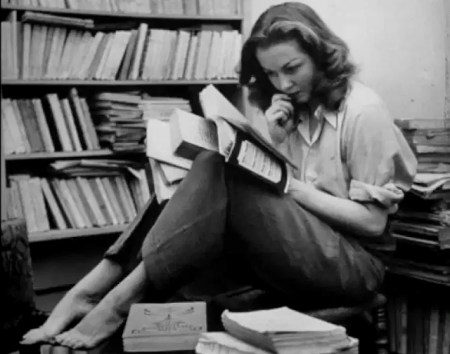Sylvia Plath: Godmother of Punk Rock?

If you google Sylvia Plath, it’s hard to find her described in any terms other than the superlative. ‘One of the finest lyric poets of the twentieth century,’ is pretty close to the general assessment.
Plath took her own life at the age of thirty. Her novel, The Bell Jar, was published under a pseudonym shortly before her death. In addition, two books of poems make up the bulk of her reputation: Colossus and Ariel. Most of Ariel was written shortly before she died and that collection, containing many of her best-known works, was published posthumously.
There is a case to be made that Plath is the godmother of bad teenage poetry. With a first-person focus, the poems are built from various shades of what I would describe as morbidity.
Rhyme schemes seem to haunt the poems rather than govern them, and the process of reading becomes very much a process of assembly. You don’t come to understand her poems as much as you become saturated with them and their unique, haunting images.
The poems are concerned with deeply personal, often negative emotions. Most of the subtlety that drives them tends to elude the teenaged poet, which is where the ranks of depressed, self-obsessed teenagers leave off and she really begins.
The Bell Jar is somewhat reminiscent of Catcher in the Rye. Published twelve years before it, Catcher features a juvenile protagonist struggling under the cloud of mental illness with a wry sense of satire. The observations of the more mature Esther Greenwood are lit with a kind of subtle, sardonic irony.
Esther Greenwood presents in the first half of the novel as a successful young cadet writer at a New York fashion magazine whose intense, personal narrative ticks away beneath the tide of expectation and convention that scrolls by her.
She distinguishes herself and her experience to her reader with a subtle, yet simple first-person intimacy that is lit by a poet’s sophisticated imagery and an ironic sense of humour.
She has a way of positioning you within an experience with an image, or combination of images, that are entirely idiosyncratic. Not only do they evoke their subject, but they evoke the individual revealing them to you, also.
The true fulcrum of the novel, one of The Bell Jar’s most affecting scenes, was when she goes skiing with her boyfriend, Buddy Willard. Buddy, an all-American medical student, decides to teach Esther to ski.
Unable to ski himself, he decides that after watching ski instructors teach children, the skill is simple enough and all Esther has to do is follow his verbal instructions.
Esther observes that the other skiiers plummeting down the hill are dressed in red and white and blue, like the elements of an American flag. A cheesy popular song is piped out into the freezing air; it’s a celebration of the kind of ersatz cheer that is essential to the ritual of American life.
Esther’s feelings of isolation define the kind of personal disjunction at the heart of punk rock. Her act of observation is itself an act of rebellion. She distinguishes herself from the fake world, and resolves her feelings through glorious action.
The cheesy social framework recedes and only the mountain, the sun and the snow in their stark, elemental glory are present for her and her confidante, the reader.
“A dispassionate white sun shone at the summit of the sky. I wanted to hone myself on it until I grew thin and saintly and essential as the blade of a knife.”
-p.94
The thing that distinguishes Plath from the punk rockers that began to appear roughly a decade later is probably her lack of rage. My younger sister once said that the difference between men and women is that men are socialised to express rage outwardly, while women are socialised to express it towards themselves.
The emotional violence in Plath’s writing is directed at the self. In place of rage is a mordant terror and intense distress that she expresses with the detachment of someone watching it happen to someone else.
That sense of brutalisation, and violation, is raw and pulsating as a mutilated finger. That pulsating heartbeat is the rhythm at the core of her act.


Leave a comment